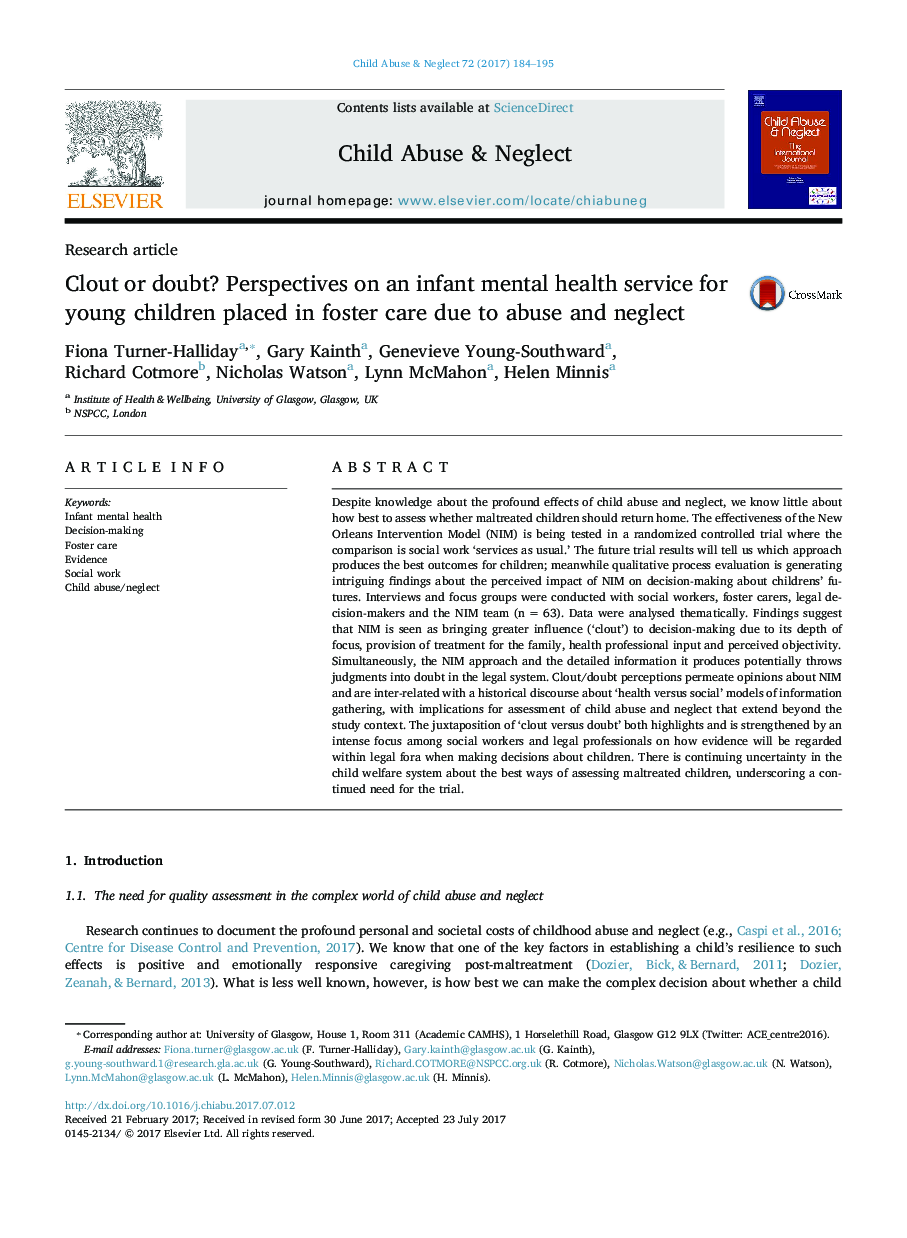| Article ID | Journal | Published Year | Pages | File Type |
|---|---|---|---|---|
| 4935910 | Child Abuse & Neglect | 2017 | 12 Pages |
Abstract
Despite knowledge about the profound effects of child abuse and neglect, we know little about how best to assess whether maltreated children should return home. The effectiveness of the New Orleans Intervention Model (NIM) is being tested in a randomized controlled trial where the comparison is social work 'services as usual.' The future trial results will tell us which approach produces the best outcomes for children; meanwhile qualitative process evaluation is generating intriguing findings about the perceived impact of NIM on decision-making about childrens' futures. Interviews and focus groups were conducted with social workers, foster carers, legal decision-makers and the NIM team (n = 63). Data were analysed thematically. Findings suggest that NIM is seen as bringing greater influence ('clout') to decision-making due to its depth of focus, provision of treatment for the family, health professional input and perceived objectivity. Simultaneously, the NIM approach and the detailed information it produces potentially throws judgments into doubt in the legal system. Clout/doubt perceptions permeate opinions about NIM and are inter-related with a historical discourse about 'health versus social' models of information gathering, with implications for assessment of child abuse and neglect that extend beyond the study context. The juxtaposition of 'clout versus doubt' both highlights and is strengthened by an intense focus among social workers and legal professionals on how evidence will be regarded within legal fora when making decisions about children. There is continuing uncertainty in the child welfare system about the best ways of assessing maltreated children, underscoring a continued need for the trial.
Related Topics
Health Sciences
Medicine and Dentistry
Perinatology, Pediatrics and Child Health
Authors
Fiona Turner-Halliday, Gary Kainth, Genevieve Young-Southward, Richard Cotmore, Nicholas Watson, Lynn McMahon, Helen Minnis,
